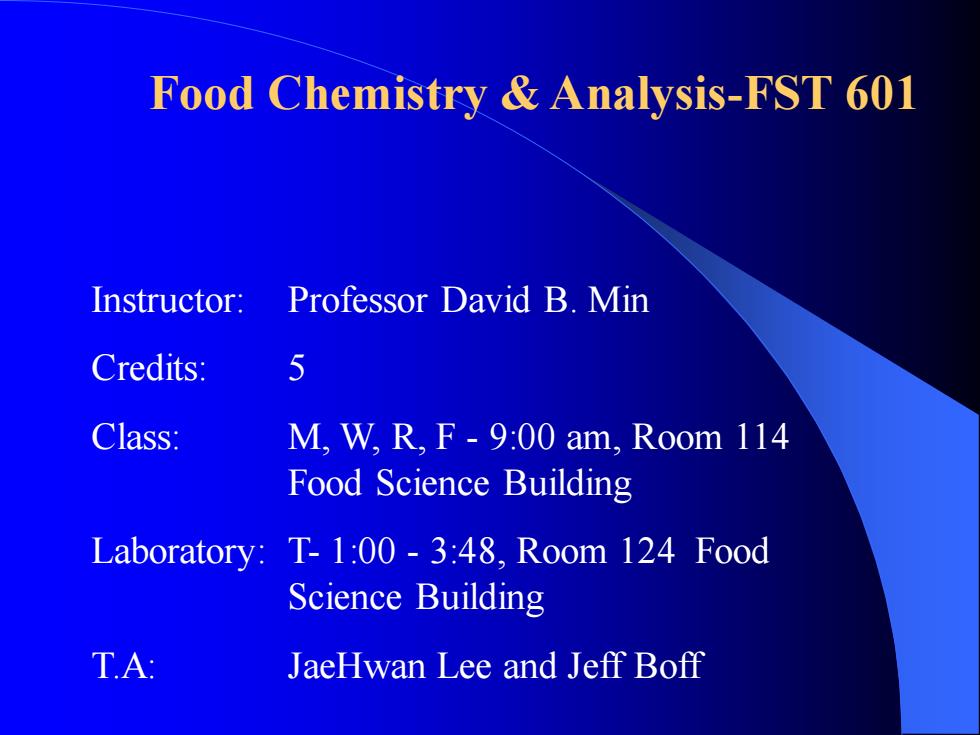
Instructor: Professor David B. Min Credits: 5 Class: M, W, R, F - 9:00 am, Room 114 Food Science Building Laboratory: T- 1:00 - 3:48, Room 124 Food Science Building T.A: JaeHwan Lee and Jeff Boff Food Chemistry & Analysis-FST 601
Instructor: Professor David B. Min Credits: 5 Class: M, W, R, F - 9:00 am, Room 114 Food Science Building Laboratory: T- 1:00 - 3:48, Room 124 Food Science Building T.A: JaeHwan Lee and Jeff Boff Food Chemistry & Analysis-FST 601
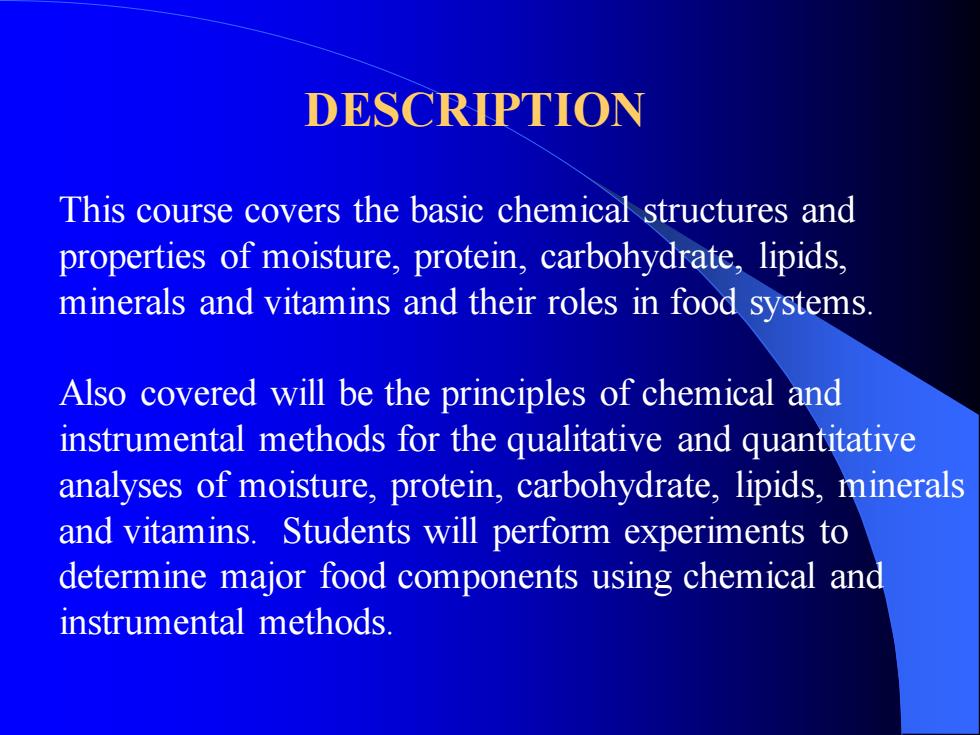
This course covers the basic chemical structures and properties of moisture, protein, carbohydrate, lipids, minerals and vitamins and their roles in food systems. Also covered will be the principles of chemical and instrumental methods for the qualitative and quantitative analyses of moisture, protein, carbohydrate, lipids, minerals and vitamins. Students will perform experiments to determine major food components using chemical and instrumental methods. DESCRIPTION
This course covers the basic chemical structures and properties of moisture, protein, carbohydrate, lipids, minerals and vitamins and their roles in food systems. Also covered will be the principles of chemical and instrumental methods for the qualitative and quantitative analyses of moisture, protein, carbohydrate, lipids, minerals and vitamins. Students will perform experiments to determine major food components using chemical and instrumental methods. DESCRIPTION
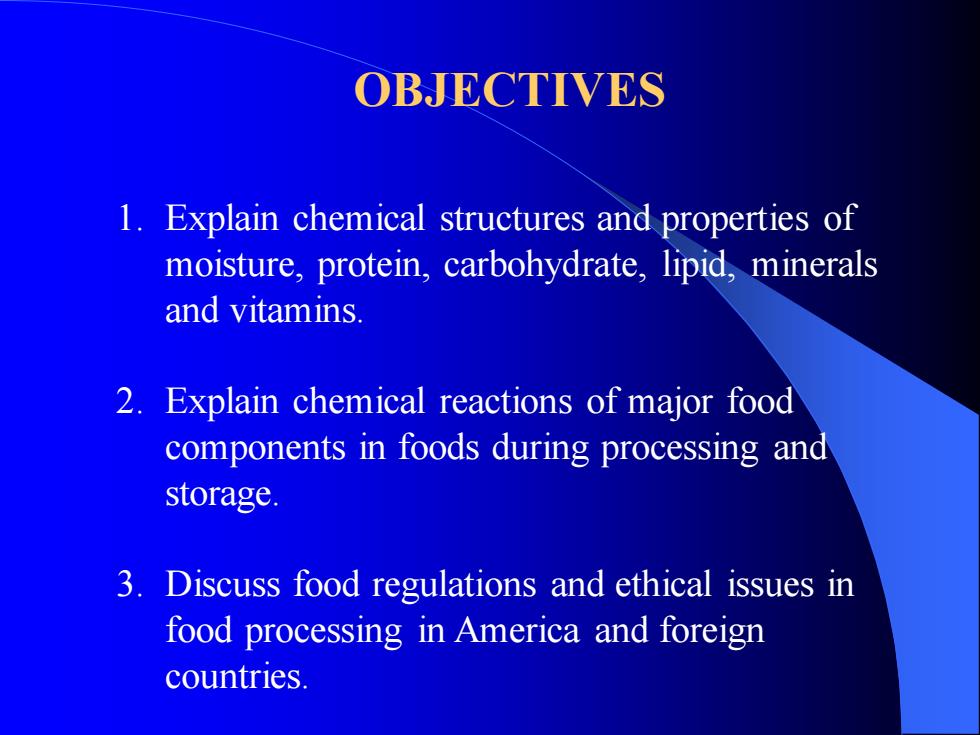
OBJECTIVES 1. Explain chemical structures and properties of moisture, protein, carbohydrate, lipid, minerals and vitamins. 2. Explain chemical reactions of major food components in foods during processing and storage. 3. Discuss food regulations and ethical issues in food processing in America and foreign countries
OBJECTIVES 1. Explain chemical structures and properties of moisture, protein, carbohydrate, lipid, minerals and vitamins. 2. Explain chemical reactions of major food components in foods during processing and storage. 3. Discuss food regulations and ethical issues in food processing in America and foreign countries
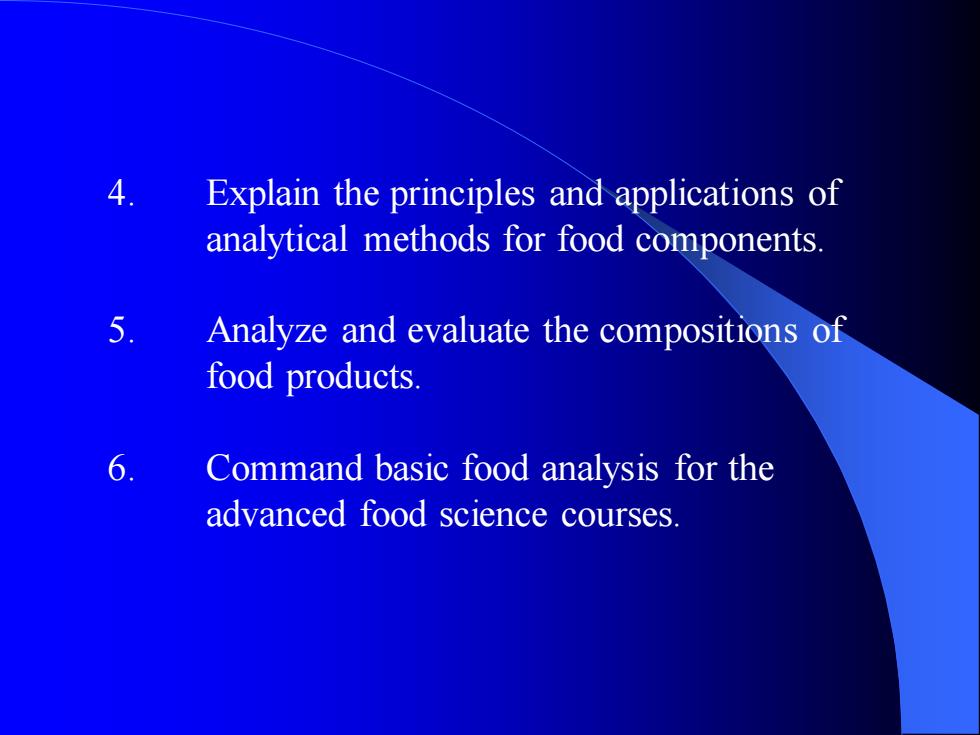
4. Explain the principles and applications of analytical methods for food components. 5. Analyze and evaluate the compositions of food products. 6. Command basic food analysis for the advanced food science courses
4. Explain the principles and applications of analytical methods for food components. 5. Analyze and evaluate the compositions of food products. 6. Command basic food analysis for the advanced food science courses
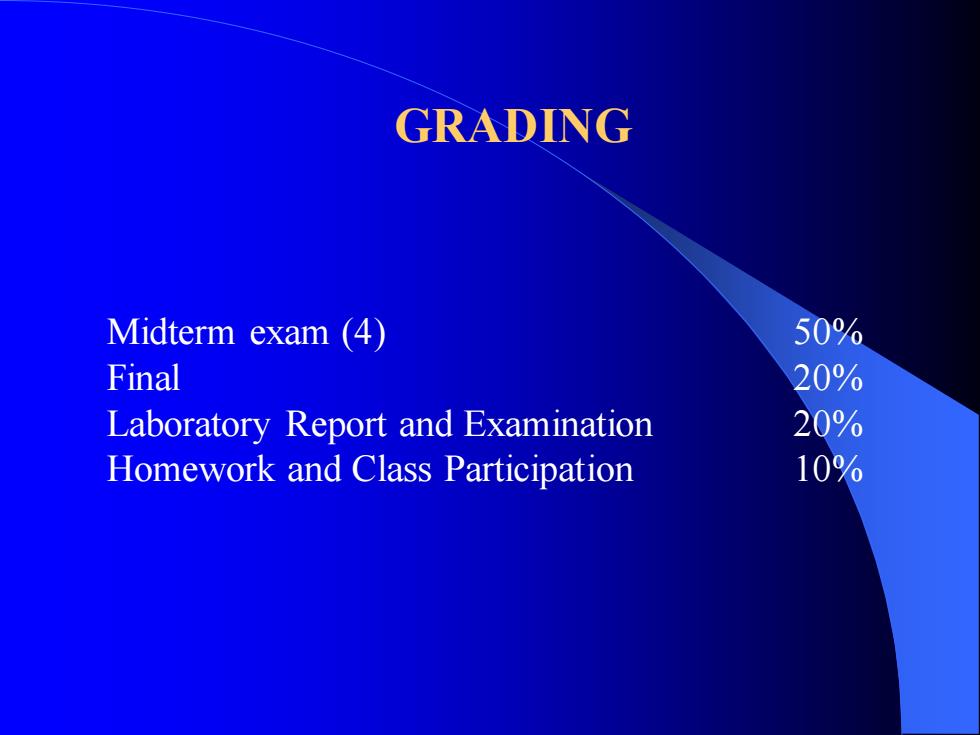
Midterm exam (4) 50% Final 20% Laboratory Report and Examination 20% Homework and Class Participation 10% GRADING
Midterm exam (4) 50% Final 20% Laboratory Report and Examination 20% Homework and Class Participation 10% GRADING